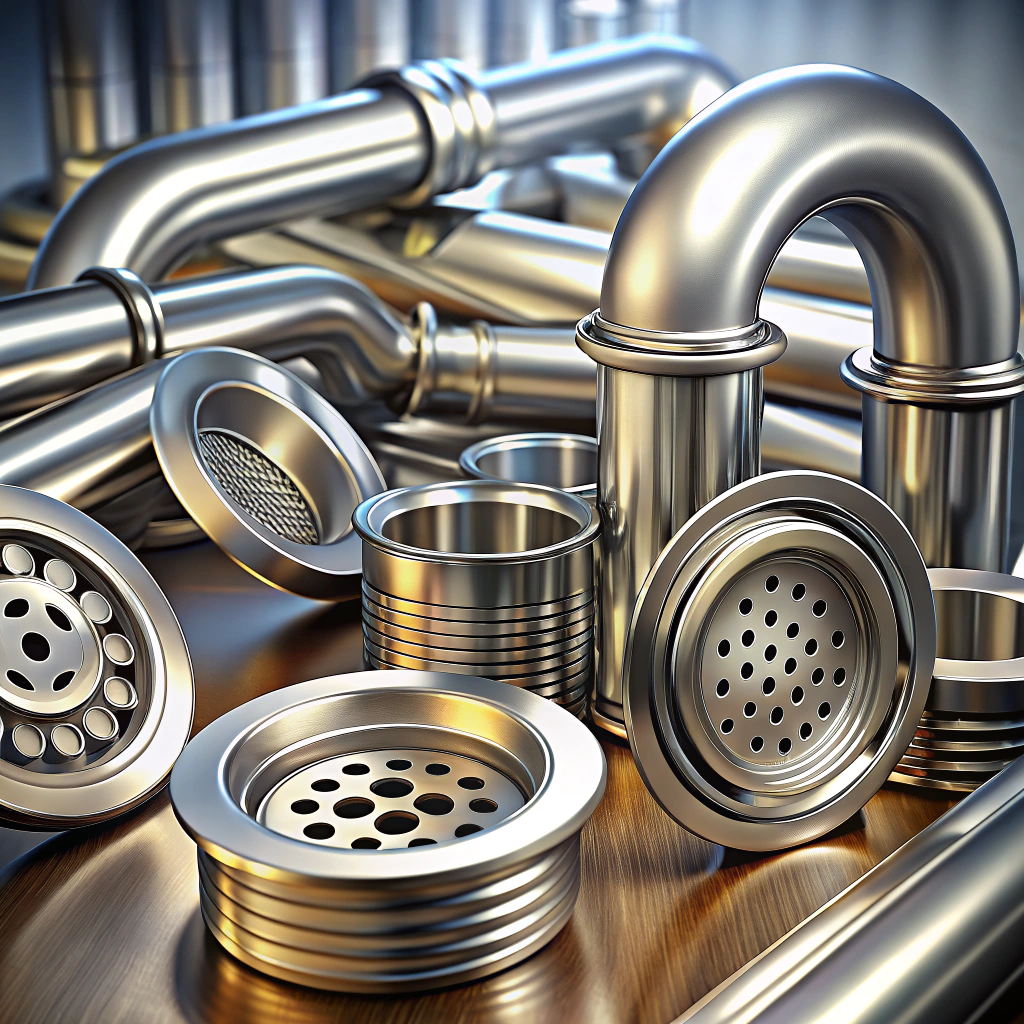Last updated on
Your kitchen faucet can last 5 to 25 years. It all depends on its quality, features, how often you use it, how you maintain it, and even your water’s hardness. Read on!
Most plumbing sites will tell you that a faucet should last about a couple of decades. But if you spent some time reading forums and reviews, you’d see that many people have replaced their kitchen faucets within the first 5 years of use. So the answer depends on who you ask.
The fact is that you get what you pay for when buying a kitchen faucet. Good brands like Delta, Moen, or Kraus, to name a few, are known to last longer than cheap counterparts made in China. The quality of manufacture is one of the key components that contribute to the longevity of a kitchen faucet. But that’s not the sole factor. Maintenance and water hardness are the close second.
Nothing wears down a faucet more than mineral buildup. It damages the valve, connectors, and plumbing. If left unmaintained, it can damage the faucet very quickly, and it may not last the 5 years we talked about. A good thing about trusted brands is that they might replace your faucet under the lifetime warranty if it wears down. So you might want to check that with your faucet’s manufacturer and see if they could do it for you.
Ultimately, we have to understand that you shouldn’t replace a kitchen faucet often. It’s one of those items that, if you can repair it at a lower cost than purchasing one, you should attempt to repair it (it might be as easy as changing old washers). We will discuss these points next.
What's Inside
The Average Lifespan of a Kitchen Faucet
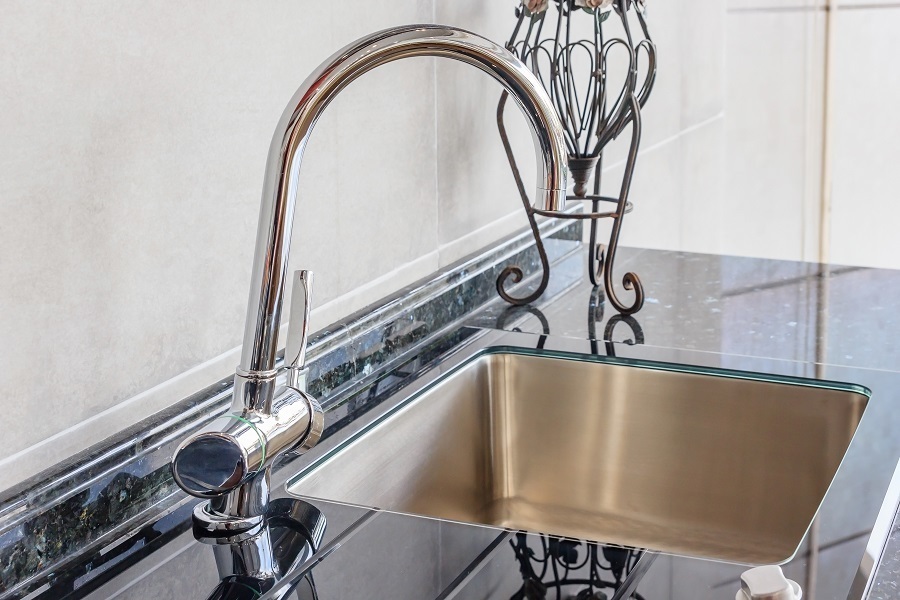
Some factors, which can result in a shorter life for the kitchen faucet, are how much they are used and their make and model. It is also important to keep up on plumbing maintenance by checking for problems. Modern faucets can often last 15-20 years when properly taken care of by keeping an eye out for any problems with repairing plumbing issues and ensuring that the water hardness is monitored to not wear down the parts inside the tap.
Repair or Replace Kitchen Faucet?
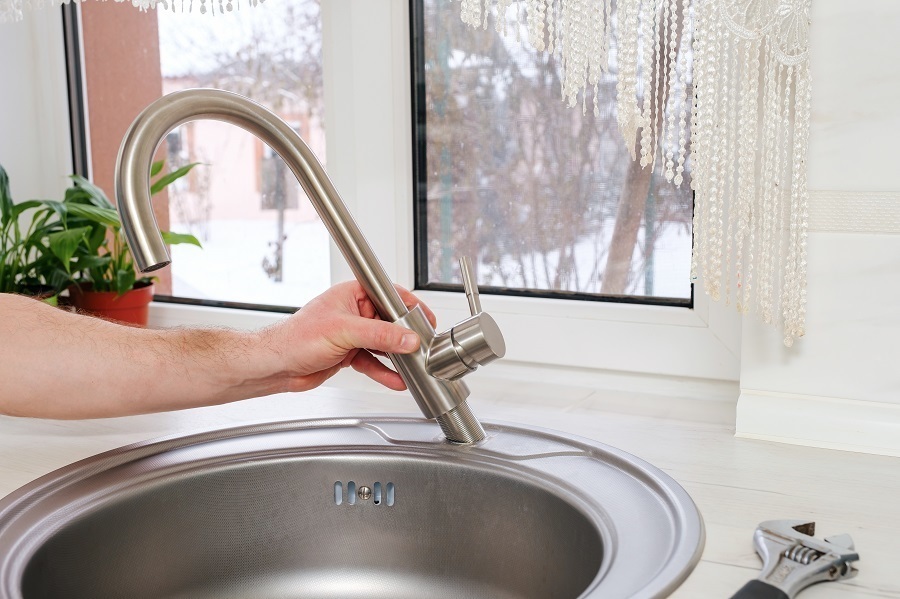
Option 1: When installing a sink or remodeling, it’s important to consider the aesthetic considerations. Having the faucets match the rest of your design theme is important. Coincidentally, there are practical reasons for replacing your faucet as well. Worn-out washers, valves, and other parts not only make you want to repair but usually are just as costly in repairs as actually purchasing a replacement.
Option 2: Replacing faucets can be a more practical decision. Though typically modifications aren’t something that someone would need to be done right away in rough economic times, sometimes they’re necessary if you don’t like the look anymore. Aesthetically it won’t match with what is already decided upon.
If you are installing a new kitchen sink, it is also necessary to install a new faucet. Replacing just the fixture when there are leaky or worn out parts is not cost-effective. You can add faucets without having to replace any other plumbing parts, even if your old faucet has outlasted its usefulness or attractiveness. However, the installation may require some changes in logistics on your side if you have an older home because it will need to be adjusted concerning newer models.
Kitchen Faucet Maintenance
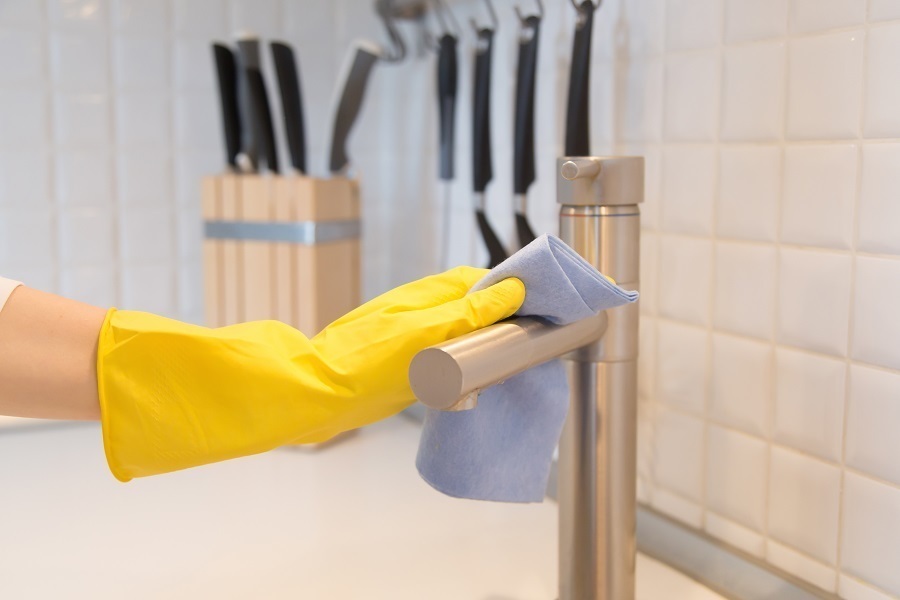
When using a kitchen faucet, you should regularly wipe it down with a damp cloth and dry it with a soft dry cloth to keep the faucet shiny and operable.
One effective way to clean mineral buildup from faucets is by filling up a plastic bag with vinegar, submerging the faucet inside, and then tying the bag around the spout. Leave it overnight to work its magic — the next morning, you can pull the vinegar-filled bag off of your much cleaner faucet.
Once a year, take apart your faucet and clean out the aerator. It should get some vinegar spray once in a while to help keep it cleaner, but make sure to actually disassemble it every year or so to clean out any mineral buildup.
To maintain your sink faucet: disassemble the nozzle head of the spout once or more a year and scrub down what you can with water or running tap water. Vinegar sprays are okay too.
How to Know If Your Kitchen Faucet is Damaged?
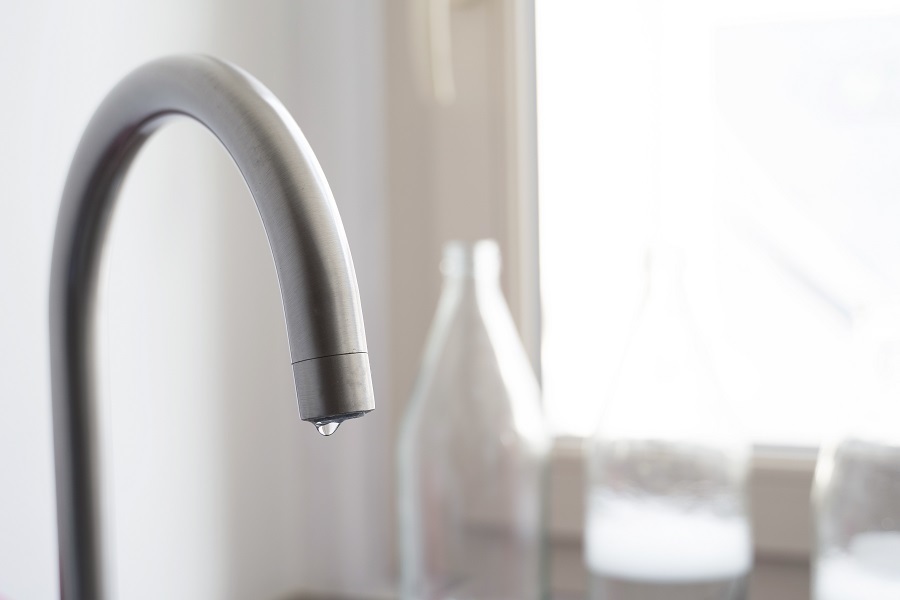
It’s common for a leaking faucet to be caused by high water pressure. Constant dripping is caused typically by there being some type of physical damage, such as the valve or cartridge.
Sometimes, when the water spits out irregularly and isn’t a constant stream, this can be because of many reasons, such as something going wrong internally with the faucet. If you notice that the water flow coming out from your kitchen faucet is inconsistent rather than steady or spitting, this usually means there has been some damage to the valve.
Is Your Kitchen Faucet Cartridge Bad?
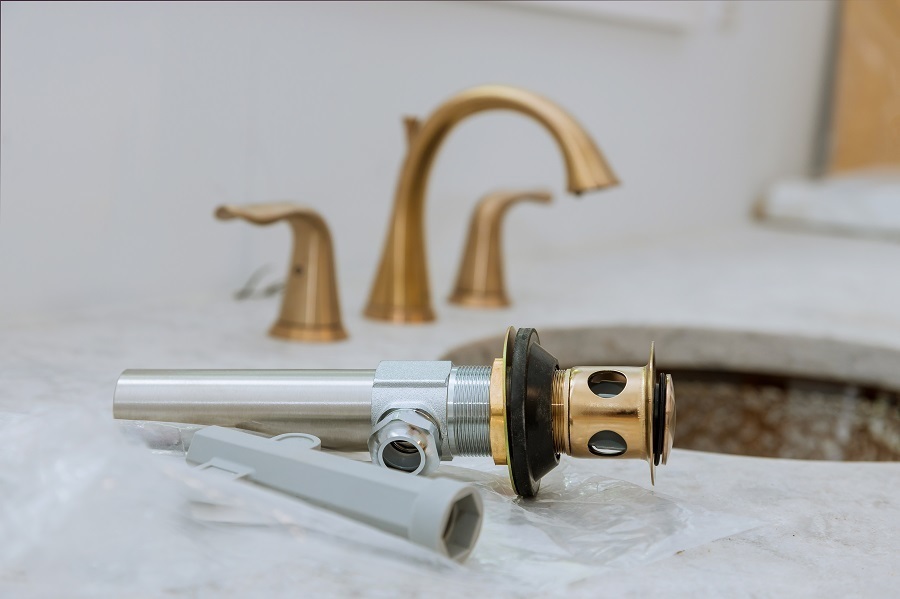
You should replace your kitchen faucet shutoff cartridges if the seals have given out and stopped functioning to their purpose. Sealed valves that grew alongside older models of kitchen faucets no longer exist. Models have been developed overtime to keep up with modern needs. The cartridge’s role is to mix hot and cold water streams and regulate their pressure levels so the equipment that depends on them can be sanitary.
Is your kitchen faucet cartridge bad? You can tell by checking if water is dripping from the faucet. If the fixture has stopped working properly, especially with cold water leaking in from other outlets, you may have to replace it.
If water spills underneath the faucet handle or knob, your kitchen faucet cartridge has likely gone bad. The cartridge is faulty if the jet of water is not strong and it becomes stuck in an undesirable position when you turn the knob to control what amount of water comes out through the nozzle. If parts are getting wet since they have been gradually filling up with standing stagnant water, it might indicate that the problem is in your bathroom drainpipes and not with your kitchen faucet. To stop this from happening, make sure to close off both visible openings in these pipes as well as draining any excess water out.
You find leaks in your kitchen faucet near the spout, rings, and cartridge. To fix these problems you need to take apart your kitchen faucet. If the leak comes from around the spout, replace both the washers that are at this section before replacing the cartridge higher up that is also impacted by leaks due to contamination or clogging. To replace a bad metal piece higher up you can unscrew it with a pair of pliers so it’s easy for one person to do when reassembling. Inspect this part for coloring and any marks or things attached that will show if water is leaking out from inside of it.
When to Replace a Kitchen Faucet?

Faucets are not made to last forever, and your faucets will break down from use over time. The older the feature, the less likely it can run efficiently which can result in expensive water bills. If you live with hard water, it will have a huge impact on how long your plumbing lasts. Here are some warning signs to watch out for. As many home appliances as may seem durable at first eventually break down. Fixtures often last until their next regularly scheduled replacement.
When is it a good time to get your kitchen faucet replaced? People often replace their kitchen faucets when they have seen visible mineral deposits due to highly processed water that cannot consistently be counteracted with installing a water softener. This can harm the inside workings of the faucet such as the gasket, filters, and flange.
Generally speaking, people should replace their kitchen faucets after 15 years. If the model number is printed on the backside of the spout, then identifying which type of faucet you have can be helpful.
It is time to replace your kitchen faucet if you have rusting on the externally visible areas of your faucet. A few hints: If there are any cracks in the handle when you move it, or if it takes a while for water to come out after turning on the faucet, these signs show that there is internal corrosion. Once signs like these appear, replacing your current kitchen sink with newer fixture will be neccessary.
One way to fix the problem (without replacing the faucet) is by replacing the cartridge inside the handle assembly –sometimes it helps but not always. If your faucet keeps leaking after you’ve attempted this, it’s time to replace it and not waste money repairing a leaky faucet. Repairing a leaky kitchen faucet is both agitating. It can lead to mold growth which will cost more down the line than just replacing the entire apparatus — not only that, but constant repair attempts will usually get you poorer results than just replacing your leaking kitchen faucet right away.
If you’re interested in a more efficient faucet for your kitchen, replacing an older one can be beneficial. Older faucets could run anywhere from 3-5 gallons per minute, but modern ones only run with 2.5 gpm or less (US) If you’re trying to cut down on water consumption and/or utility costs associated with that usage, replacing an old model could be beneficial because it’s unnecessarily wasteful in terms of water usage.
When to Repair a Kitchen Faucet?
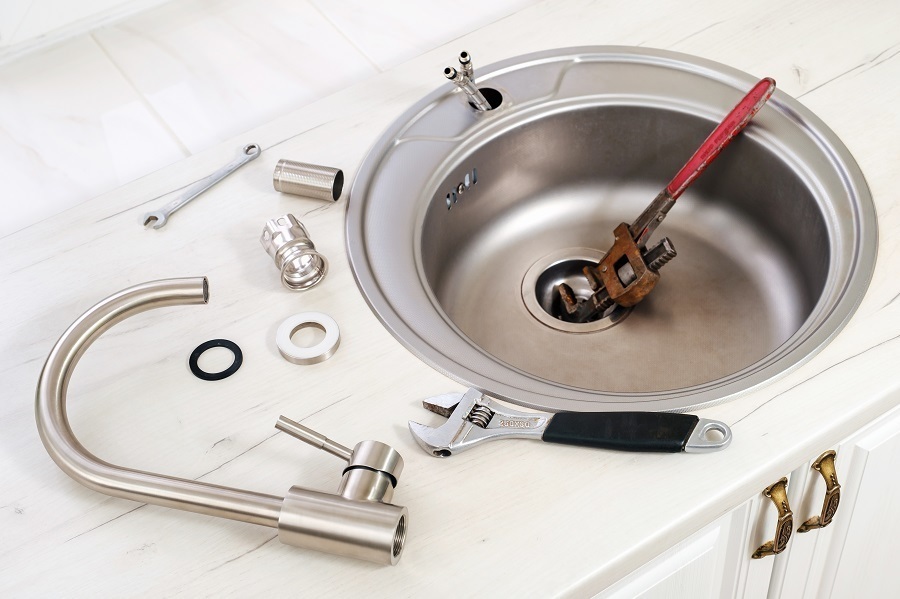
When is it time to repair a kitchen faucet?How hard your water is affects how long your handle should last. A simple repair will generally be less than a replacement, but price also depends on damages and fix.
Faucets come in many different designs. Some may have more components than others and thus be more expensive to replace. If you have a high-end model, such as a touch or touchless faucet, it is often less expensive to repair it than to get a new one because they tend to be very cost-prohibitive.
A squeaky kitchen sink usually doesn’t constitute a necessity for replacement, but something as easy as lubricating the appropriate parts could solve the problem.
If your faucet needs constant repairs, it’s usually cheaper to replace the whole thing than keep doing what you’ve been doing before.
Kitchen Faucet Repair Cost
The average cost of repairing a kitchen faucet can range from $194 for more serious problems to as little as $40-$75, depending on what the job entails. The plumber will usually tell you how much it’ll be after he/she finishes inspecting the problem, but if you’re going to do the work yourself, this gives you an idea beforehand. The most expensive jobs have been a previous leak that requires new pipes or flooding in the surrounding area (the repairs cost more than expected). Other times, however, clogs or small dripping water issues could transmit with just a simple fix.
The cost to repair a kitchen faucet will depend on the type and location of the problem too. Driving a new part into an antique copper pipe could cost thousands. The average installation includes changing out the hoses and running hot water or compressed air through it and should cost around $300, plus additional costs for parts. Various factors can affect how much kitchen faucet repair will cost, such as which part is broken, if you buy the replacement part yourself or not, and how structural damage incurred from any problems affects your final expense. On average, installing a new washable filter under 20 minutes for less than $30 should fix most things up fairly quickly without costing too much.
In addition to the cost of an individual part, the average plumber charge for fixing a dripping faucet is around $100. This can be higher when the cause of the drip is in more difficult to reach places or if it needs other supplies like new screws or pipes. Other items that may seem small also affect repair costs, such as replacing an aerator which ranges from $5 to $20 depending on what quality you need.
FAQ
A kitchen faucet should not be replaced sooner than it’s necessary. That is, if it costs less to repair it, it is not necessary to replace it.
You need a new kitchen faucet if the repair costs more than buying new, or if you want to change the style or get more features.
Stainless steel faucets tend to be more durable than their counterparts made of other materials.



